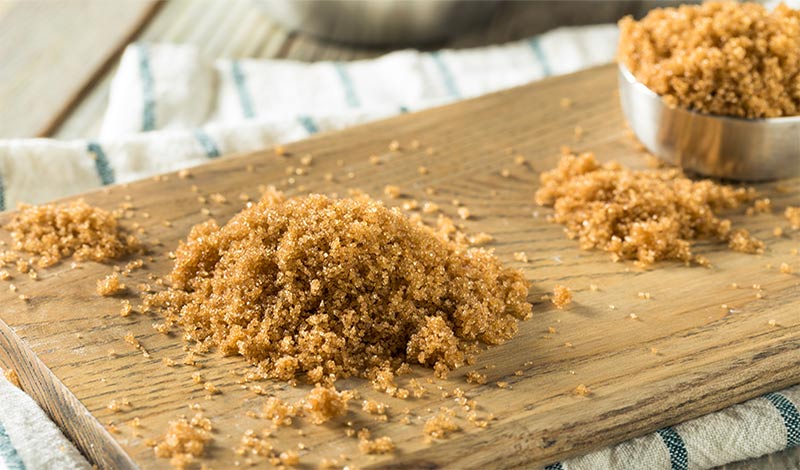Wondering how to soften hard brown sugar? Softening brown sugar takes no more than a few minutes and at KitchenGuyd, we’ll tell you all about it.
Ever happened that you got up in the morning, walked to the kitchen to make your morning coffee but very soon you realized that your brown sugar has become unusable. Such a heartbreaking moment, isn’t it?
Yup, it’s happened to me and if missing my early morning cup of joe wasn’t bad enough, returning home I realized, I still only had a rock of brown sugar (so still no coffee.. agggggghhh, the horror).
Thus, I went on the internet, learned pretty much every trick in the book to melt, store brown sugar, tried a few out and voila, I finally had soft brown sugar.
And now since I had quite a lot of information about brown sugar, I thought to myself, hmmm, maybe I could write a post about it as well.
So if you’ve somehow managed to harden your brown sugar, from melting it to storing it, here’s everything you need to know about brown sugar.
What is Brown Sugar?
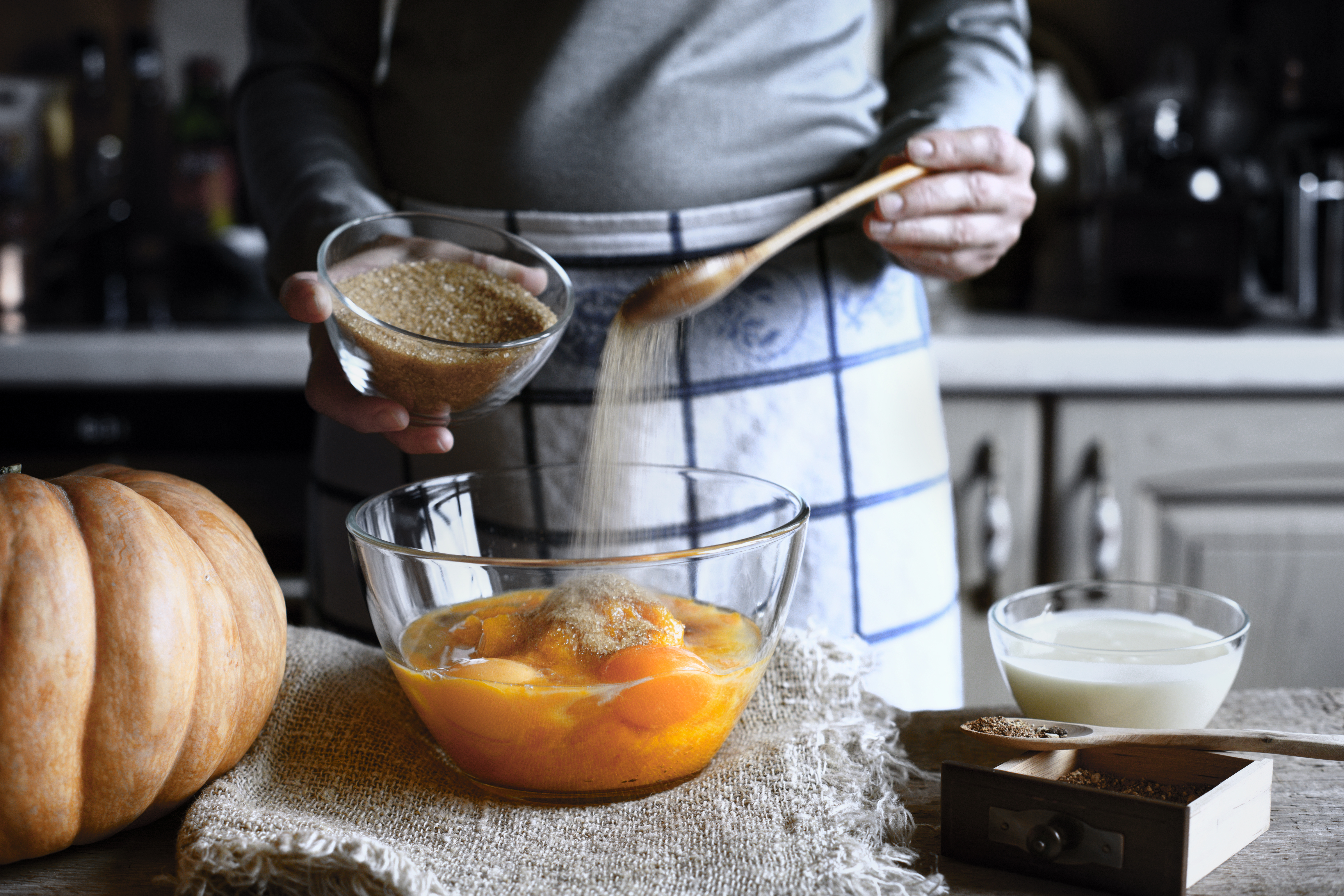
Let’s start with the basics. Brown sugar is nothing but molasses syrup added to white sugar. The more molasses added to it, the darker the sugar will be. But what is molasses?
It is the byproduct removed during the sugar refining process and when it covers the outer side of the sugar, it makes the sugar moist and malleable.
It is the reason why this brown sugar can be packed together in any specific shape. But it can become hard too and here’s the reason why and how.
Why Does Brown Sugar Get Hard?
You haven’t solved a problem until and unless you understand the root cause of it. So here’s why brown sugar gets hard.
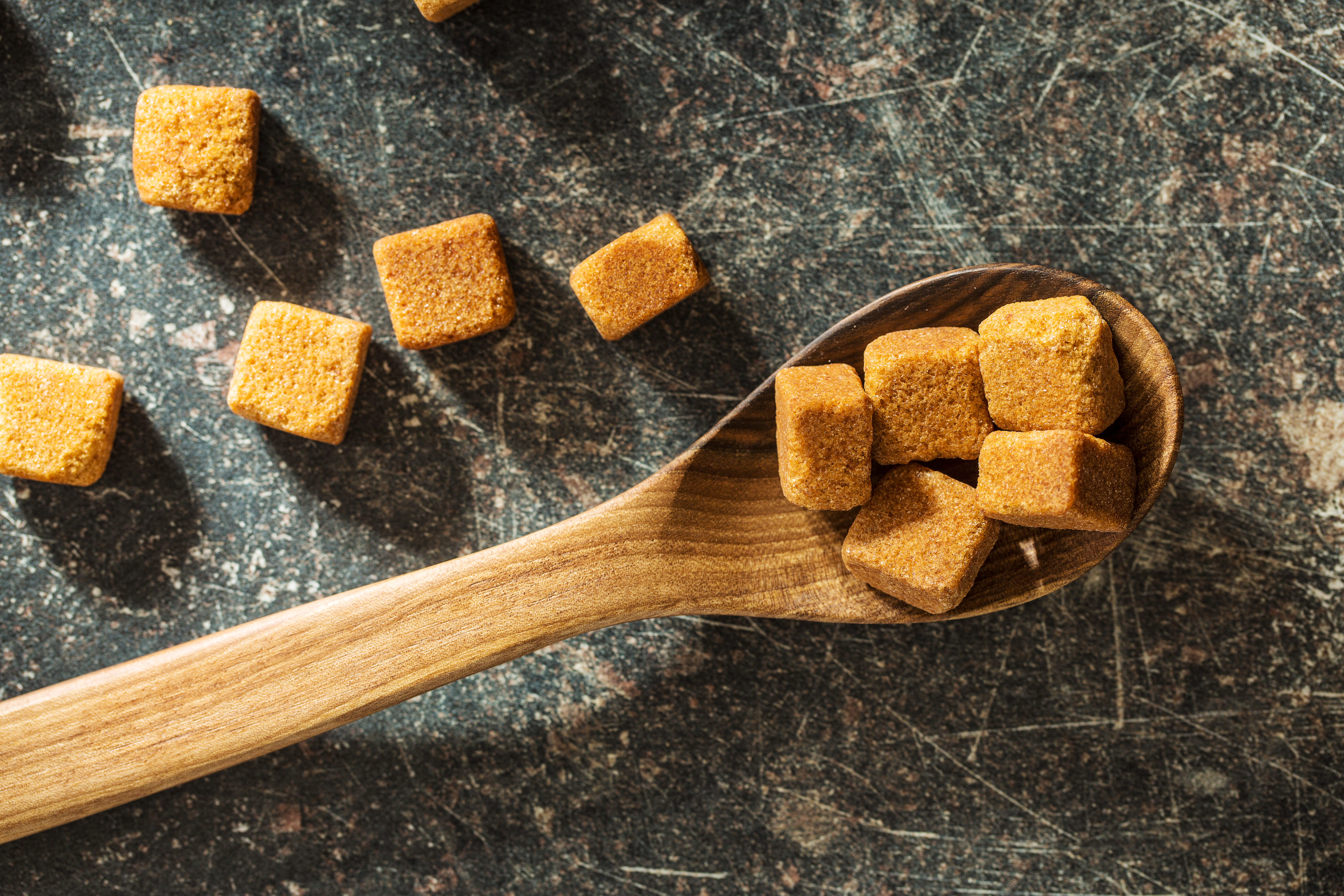
In the above section, we have learned that molasses is the reason why your brown sugar remains soft and malleable. But if the sugar is exposed to air, the coating of the molasses evaporates.
This literally makes those sugar crystals glued to each other and the layer between them dries out making it hard like a candy.
Well, not to worry because ironically, this molasses is easy-to-go with as it can absorb the moisture very easily. Thus, preventing your brown sugar from hardening.
How to Soften Brown Sugar
And now to the point you’ve been waiting for. So, here I am with a few tricks of the trade to help you keep your brown sugar soft.
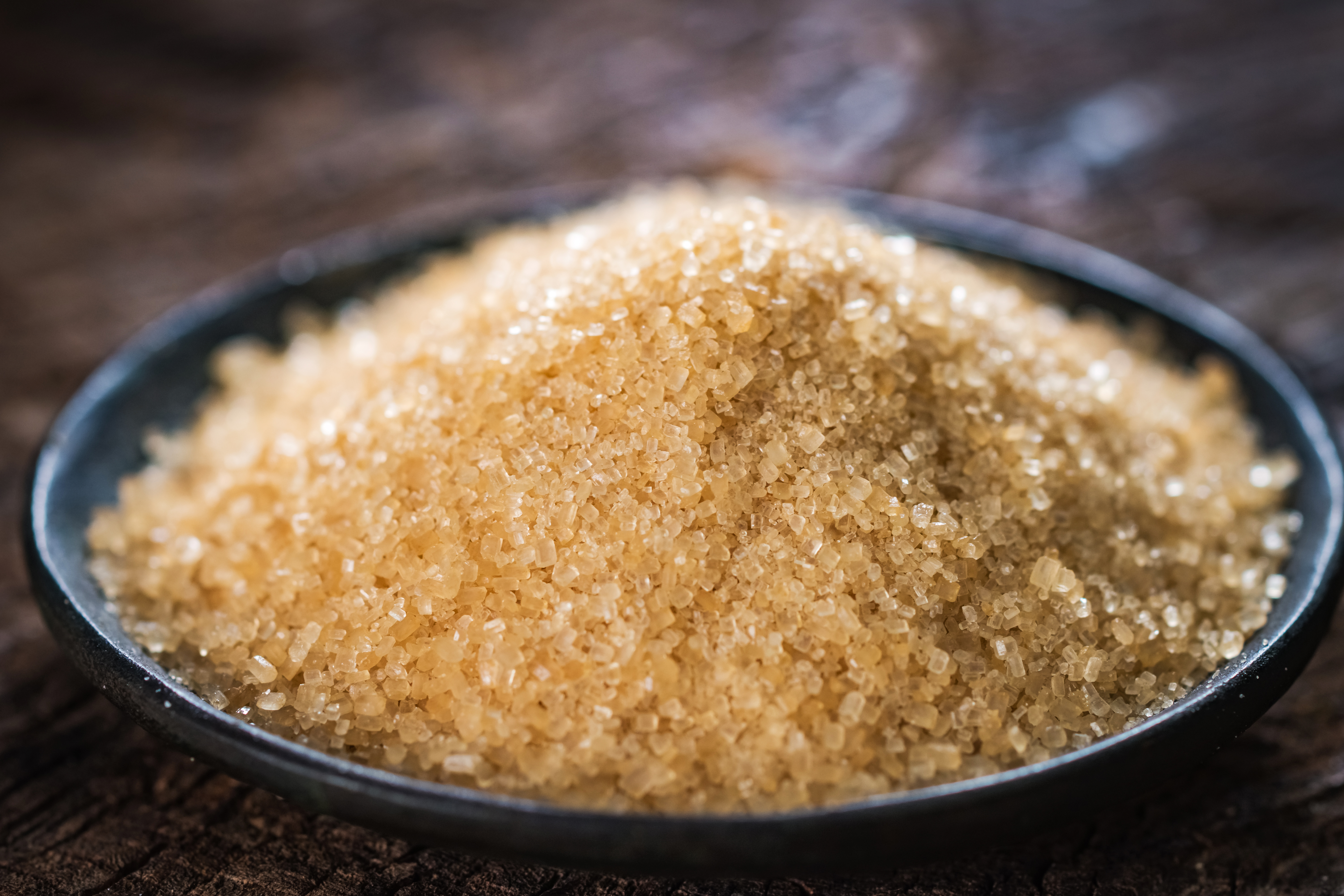
Tip 1: Add water for a few days
Moisture is the key factor that keeps the sugar soft and adding water to it is the simplest method to maintain the softness.
All you need to do is sprinkle a few drops of over your brown sugar. Now, seal your plastic bag and keep it aside for a few days.
Tip 2: Use a moistened cloth
A wet cloth or paper towel will also be of great help to add moisture to your brown sugar. You just need you to keep your hardened sugar in an open container and cover it with the wet cloth.
Leave the container overnight. If you do the process correctly, your sugar will get softened by morning.
Tip 3: Use the food processor
If you want to have soft brown sugar at the present moment, put it in the food processor or use a blender. This will break the hard pieces of brown sugar and provide you with grainy and ready-to-use brown sugar.
Tip 4: Microwave the sugar
If somehow you cannot use your food processor, take help from your microwave. Set your hardened brown sugar in a microwave-safe plastic bag. Take a square of a wet paper towel. Make sure you squeeze the towel properly so that it is not dripping.
Keep the paper towel and the sealed bag in the microwave for 20 seconds and check. If it is still not softened, repeat the process in 20- minute increments until you get the correct softness you want.
Tip 5: Soften over the oven
If you cannot go with both the above options, use your oven. What you have to do is, heat the oven at 250°. Now keep the brown sugar in a baking pan and bake it for 5 minutes.
Check your sugar and if still doesn’t get soft, bake it for few more minutes. Repeat the process until you get the desired softness you want.
Generally speaking, brown sugar can be kept as long as you want but be sure you store it properly.
How to Store Brown Sugar
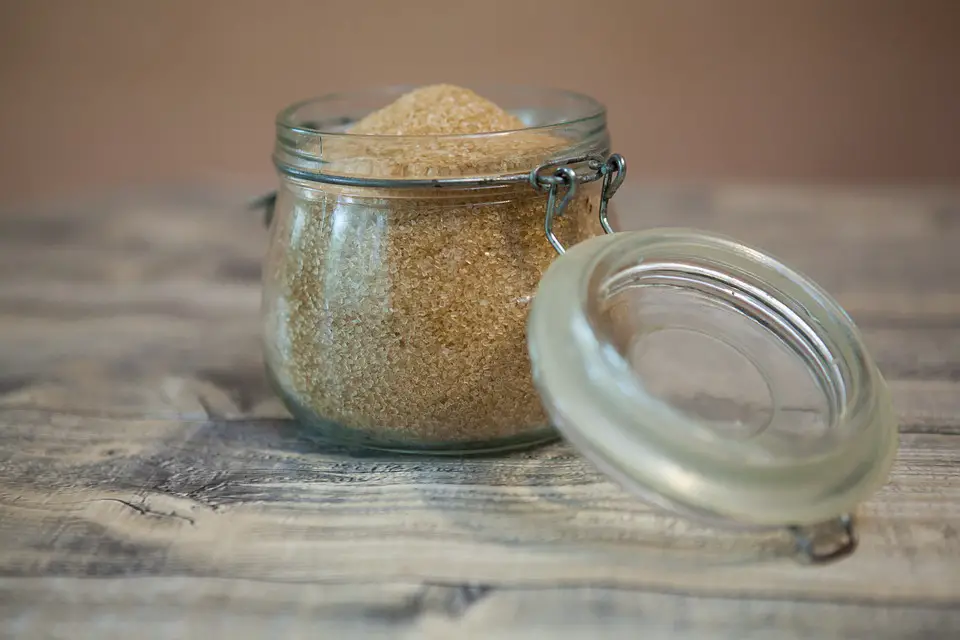
Tip 1: In an airtight container
You know it that due to air exposure your brown sugar hardens. Therefore, the best option to keep it soft is to store it in an airtight container.
The minimum the air exposure the softer it remains. So make sure to lock it properly and double check for any cracks or other openings.
Alternatively, you can also use a Ziplock bag to store the brown sugar but remember to take out all the excess air before you lock it.
Tip 2: In a terracotta sugar saver
If you look around the kitchen shops or grocery shops, you can find this amazing thing called terra cotta sugar saver.
These budget-friendly, small and circular devices are made from terracotta clay. These devices are designed in such a way that it retains the moisture in the sugar and keep it soft.
Remember, when you buy this sugar saver, you should soak it in water for around 15-20 minutes and then let it dry.
Tip 3: Add marshmallows to the bag
Marshmallows also work well in keeping the brown sugar soft. In case, you do not have the above device, add a few marshmallows in the container.
Tip 4: Store with apples and bread
As you know it that apple and bread are slightly wet in nature. So, this is one another option you can keep your sugar soft.
Simply add a few slices of apple or a piece of bread in the container and see the magic. It might take a day to get soften.
Homemade Brown Sugar: How to do it
You can easily make brown sugar at home as well and here’s how.
Ingredients:
- Molasses
- Granulated Sugar
Procedure:
- Add 1 Tbsp of molasses to every 1 cup of granulated sugar.
- Mix them together until you reach a desired color and texture
- Once done, store it in an airtight container.
This DIY Recipe by Serious Eats is one I love, so do check it out.
How to Check if Brown Sugar is Bad or Spoiled?
It is really important to keep a check on your brown sugar in order to prevent your body from foodborne illness. Though brown sugar doesn’t go fully bad, its texture will slightly change but the sugar generally remains good.
But there’s one case, your brown sugar can go bad if you have not stored it properly and some bugs have taken an entry into the package and die there. If by any chance you find any dead or alive bugs in your brown sugar, throw it away immediately.
Best Brown Sugar Substitutes
One should always be prepared with backup plans or options, whether it is life or cooking. You cannot stop your work in the middle just because you don’t have any other choice.
So, here I am with some of the best substitutes or you can say a backup for brown sugar. Have a look.
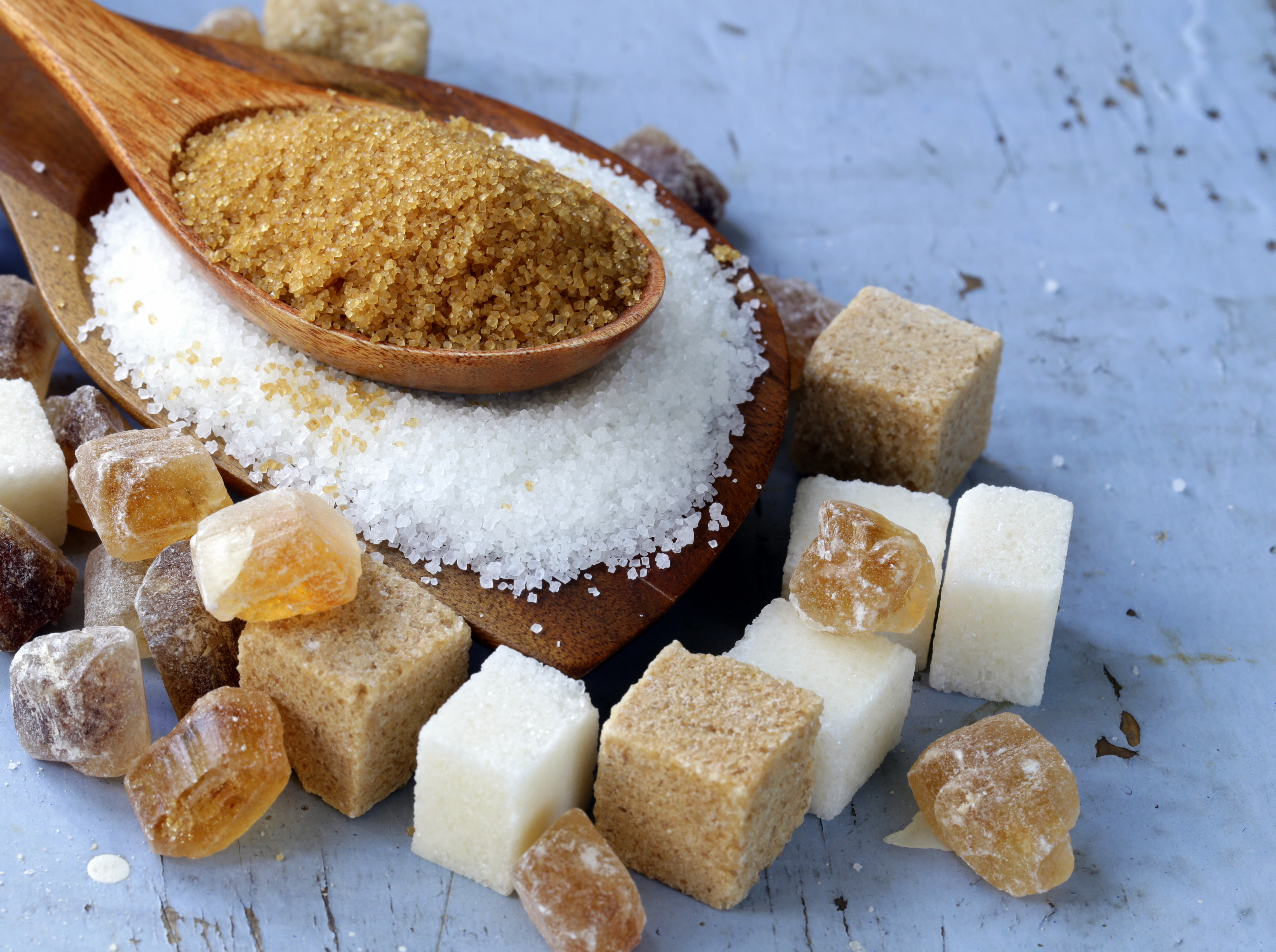
More white sugar
Possibilities are high that if you are out of brown sugar, you must have granulated white sugar on your side. Use it as an advantage but while making cookies you should remember one point.
You should use double the amount of white sugar and it will go perfectly. You’ll notice that these cookies will be a bit crispier than those made with brown sugar.
White granulated sugar + molasses
As I have discussed it above, you can take the DIY route and make your brown sugar at home. The process is really simple.
You just need 1 cup of white sugar and a tablespoon or two of molasses. One tablespoon should be used for making light brown sugar and two tablespoons of dark brown sugar. Mix both of them together until you get yourself some fluffy brown sugar.
Muscovado sugar
This sugar is one kind of unrefined sugar cane that still contains molasses in it and is one of the great brown sugar substitutes if the flavor is what you care for.
This kind of sugar is generally found on the island of Mauritius and is quite darker than the regular brown sugar, which further makes it richer in flavor.
You may not know this but this particular sugar is moister than other sugars, thus it will not form clumps while baking cookies.
Coconut sugar
The origin of the coconut sugar is the palm of coconut which is boiled and dehydrated. Coconut sugar contains the same number of calories as white sugar does but is much lower in fructose.
This is the reason why it is considered a healthier option. The caramel color of coconut sugar is quite similar to the brown sugar, but what makes it the best substitute is the same taste.
Maple sugar
This maple sugar is made directly from the maple syrup, which automatically adds sweetness and a pleasant maple taste to your recipes.
Generally, I use this sugar to top off dishes like porridge or oatmeal but you can also use it like brown sugar for baking at it really goes well with pies and cookies.
